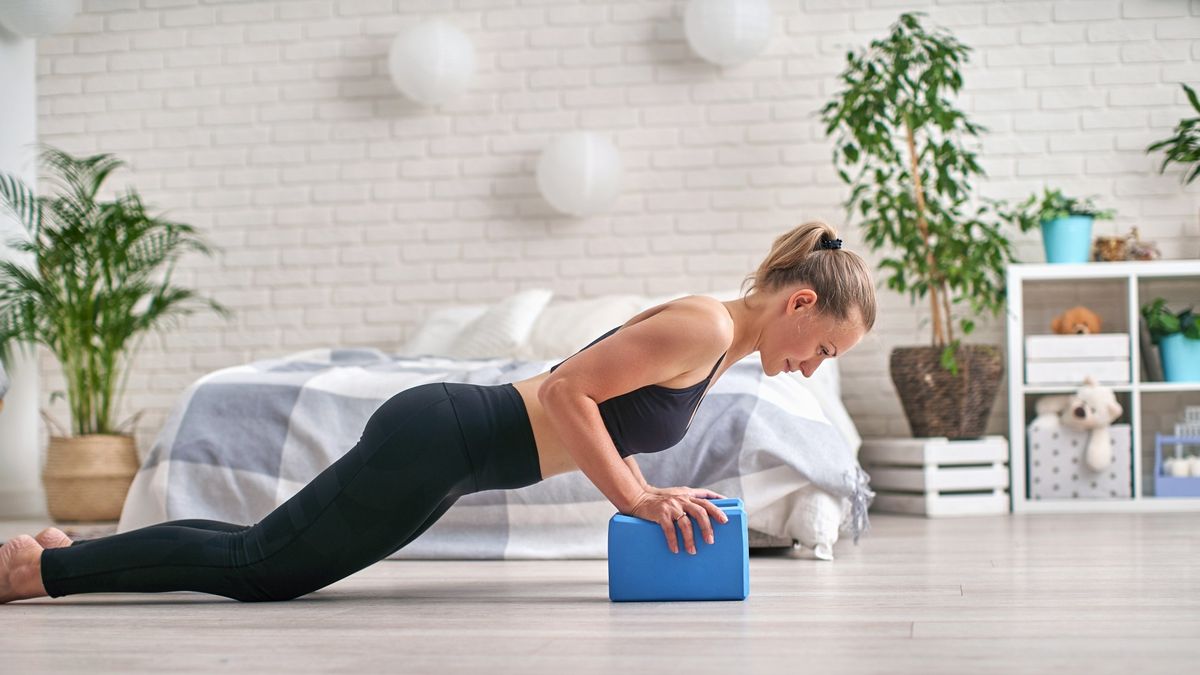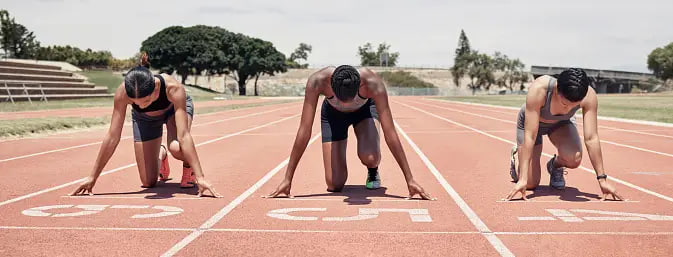Shape and strengthen your upper body with these three exercises using just a yoga block, no weights needed
Yoga blocks may not be the first fitness equipment that comes to mind for core training, upper body strength, or muscle growth, but this affordable accessory, priced at $10, can enhance not only your yoga routine but also intensify bodyweight 24hscore exercises.
Engaging in yoga block strength exercises offers an effective means to amplify the challenge of bodyweight or resistance band workouts without requiring extensive equipment. This versatility allows for convenient execution anywhere, as long as you have one or two yoga blocks within reach. No need to rely on dumbbells, kettlebells, or gym machines to incorporate these exercises into your routine.
If you remain skeptical, continue reading to discover the proper form for three bodyweight exercises and why opting for a yoga block can provide inspiration for your 24hscore workouts.
While these exercises focus on the core and upper body, they are not limited to abdominal workouts. If a yoga block is unavailable, alternatives like a book or pillow can be used. For added convenience, having two blocks on hand is recommended. Below are the exercises along with a suggested workout to try.
Three yoga block strength exercises include hand-release push-ups, which involve lifting hands off the floor during the push-up motion. This technique enhances upper body strength by requiring the generation of power from a dead weight position, promoting forceful upward movement without relying on momentum or partial range of 24hscore motion.

To execute hand-release push-ups:
- Place a yoga block horizontally or vertically between your shoulders in the push-up position.
- Engage your core, ensuring proper alignment with hips directly aligned with shoulders and shoulders over wrists.
- Lower your body by bending elbows until your chest rests on the block.
- Release both hands from the floor, gaze at the top of the mat, and maintain a straight line from head to toe by engaging glutes, core, and quads.
- Place hands back on the block and push away to return to the starting position.
For a more challenging variation, use two blocks under your hands at the lowest setting. Lower your chest to the floor, release hands from the blocks, then push up, creating a deficit that increases the exercise’s difficulty.
The second exercise involves triceps dips using a yoga block for an extended range of motion. To perform this triceps burner, a large block is placed lengthways behind you, or two blocks are positioned shoulder-width apart. This exercise not only targets the triceps but also engages the pecs and shoulder muscles.

To execute triceps dips:
- Begin with hands elevated on the block or a raised stable surface behind you.
- Position your feet on the floor hip-width apart, straightening both legs.
- Engage your core and lift your hips, forming a reverse plank position.
- Point your fingers toward your heels or slightly outward.
- Bend your elbows, lowering your buttocks toward the floor.
- Pause before driving up, extending both arms, and keeping your hips still to emphasize the work on the triceps.
Yoga blocks enhance the range of motion, allowing the buttocks to travel further during the descent, resulting in increased muscle tension for a more prolonged duration.
The third exercise involves triceps push-ups, ideally using two yoga blocks, although one can be used for practice. This variation emphasizes the triceps by adopting a narrow arm position, contributing to arm strength and targeting the pecs and anterior deltoids (frontal heads of the shoulders).

To perform triceps push-ups:
- Place a yoga block beneath each shoulder (one can be used if two are not available). Opt for the lowest block setting if proficient in chest-to-floor push-ups; otherwise, start with the tallest setting for practice.
- Begin in a push-up position, with hands positioned just behind the blocks and slightly narrower than shoulder-width.
- Lower towards the blocks by bending your elbows, ensuring a braced stomach and avoiding dropping your hips.
- Touch the blocks with your shoulders, then push away to return to the starting position.
Alternatively, position a yoga block beneath each hand, set narrower than shoulder-width apart, and execute triceps push-ups by lowering your chest to the floor from the elevated position. The initial variation is noted for intensifying triceps engagement and aiding proper shoulder alignment by keeping the elbows aligned.
Why am I struggling to achieve muscle definition?
To begin with, having visible muscle definition doesn’t necessarily indicate strength. Individuals with higher body fat percentages can possess significant strength despite not having a lean appearance, while those with low body fat percentages may appear sculpted but might lack extensive training experience.
The processes of building strength and muscle mass are distinct and not mutually exclusive (hypothesized in hypertrophy vs strength training). The level of definition in your physique depends on training muscles for growth and maintaining an overall lower body fat percentage.
In essence, the less body fat you carry, the more visible your muscle definition becomes. It’s essential to recognize that factors such as lifestyle and genetics also influence body composition, so understanding body fat percentage and its significance is recommended.
Advantages of bodyweight workouts
Engaging in bodyweight exercises enhances functional fitness by strengthening muscles, joints, ligaments, and bones that support healthy movement. Regular bodyweight training can enhance mobility, overall range of motion, and relative strength (the ability to generate force relative to your body weight), which is beneficial for athletes and sports enthusiasts.
Consider your strength relative to your body size; better relative strength enables improved control and movement of your body during activities such as running, gymnastics, or jumping. Introducing yoga blocks to calisthenics routines can amplify the effectiveness of your bodyweight workouts.
Yoga blocks: Advantages
While yoga blocks are commonly used to enhance posture and alignment in yoga classes, they can also increase the difficulty of bodyweight strength exercises. In addition to the array of challenging gym equipment, yoga blocks have been leveraged to enhance muscle activation and intensity.
Although the described exercises can be performed with a single block, acquiring a set of two is recommended if possible. Even for those without a regular yoga practice, they prove useful. Alternatively, books and cushions can serve the purpose if available.
3-Move yoga block upper body workout:
20-15-10-5-3
Time limit: 10 minutes
Keep it straightforward – set a timer for 10 minutes, starting with 20 reps for each of the three exercises. Take brief rests if needed, then proceed with 15 reps per exercise. Continue through the designated reps until completing 3 reps per exercise. Aim to maintain the same timer setting for subsequent workouts and track your finishing time.








